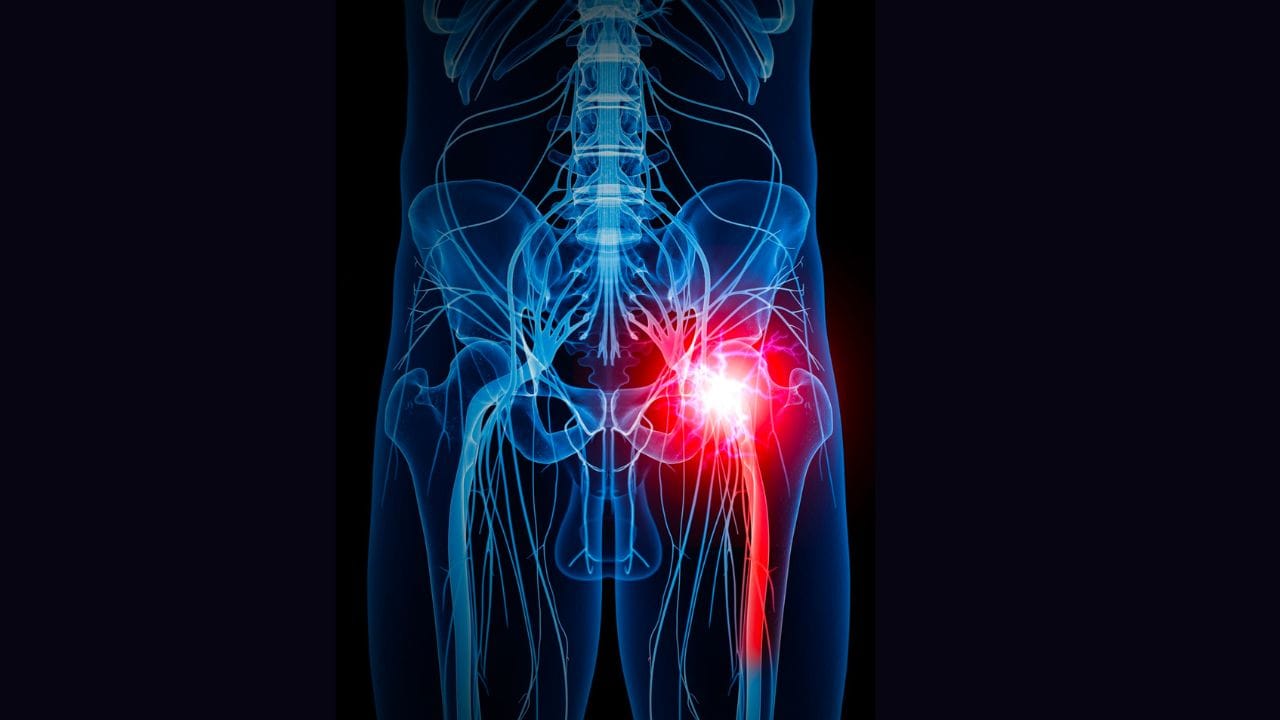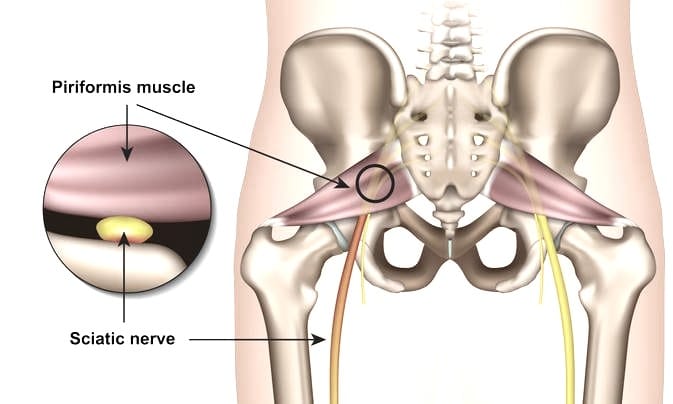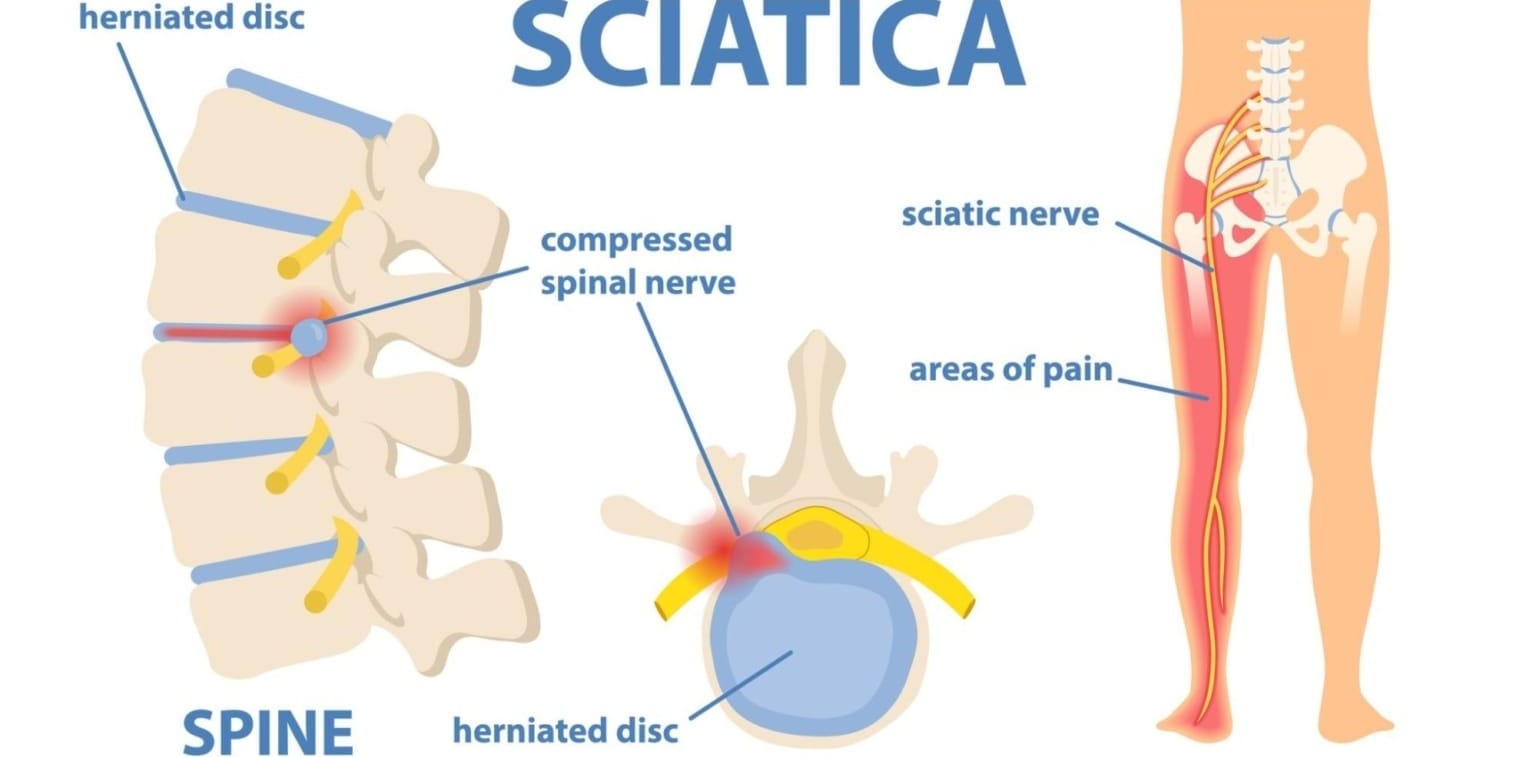What Is Sciatica? A Guide to Understanding Sciatica Pain
Sciatica refers to pain that radiates along the sciatic nerve, affecting the lower back, hips, and legs. Learn about its causes, symptoms, and treatment options.

Sciatica is a term commonly used to describe pain that travels along the path of the sciatic nerve, the longest nerve in the human body. It typically affects one side of the body and radiates from the lower back through the hips and buttocks and down each leg. The condition can cause mild to severe discomfort, and in some cases, it can lead to long-term mobility issues if left untreated.
If you or someone you know is experiencing sciatica, it’s essential to understand its causes, symptoms, and available treatment options. This comprehensive guide will provide everything you need to know about sciatica.
What Causes Sciatica?
Sciatica is not a diagnosis in itself but rather a symptom of an underlying issue. The sciatic nerve, which is responsible for controlling the muscles in the back of your knee and lower leg, can become compressed or irritated due to various conditions. Some of the most common causes of sciatica include:
1. Herniated or Slipped Disc
A herniated disc occurs when one of the discs in your spine, which act as cushions between the vertebrae, slips out of place. This can put pressure on the sciatic nerve and lead to sharp, shooting pain along the nerve’s path.
2. Spinal Stenosis
Spinal stenosis is the narrowing of the spaces within the spine, which can put pressure on the spinal cord and nerves, including the sciatic nerve. This condition can lead to pain, numbness, or weakness in the legs.
3. Degenerative Disc Disease
As we age, the discs in our spine naturally start to wear down. When this happens, the discs may lose their ability to cushion the vertebrae, and the spaces between the vertebrae can become narrower, leading to nerve compression and sciatica pain.
4. Piriformis Syndrome
The piriformis muscle, located deep in the buttocks, can sometimes spasm or tighten, irritating the nearby sciatic nerve. This condition, called piriformis syndrome, can cause sciatica-like symptoms.
5. Spondylolisthesis
Spondylolisthesis occurs when one vertebra slips forward over another, leading to nerve compression. This misalignment of the spine can cause sciatica pain as well as other related symptoms.
6. Injury or Trauma
Injuries to the spine, such as from car accidents or falls, can result in sciatica. Trauma to the back or pelvis can cause damage to the discs, vertebrae, or muscles, leading to nerve irritation.
Symptoms of Sciatica
The symptoms of sciatica can vary depending on the underlying cause of the nerve compression. However, the hallmark sign is pain that radiates along the path of the sciatic nerve. Common symptoms include:
- Pain in the lower back, buttocks, and legs: The pain often starts in the lower back and radiates down to the hips, buttocks, and one leg. It may be sharp, burning, or shooting in nature.
- Numbness or tingling: Some individuals experience a tingling sensation or numbness along the sciatic nerve, particularly in the lower leg or foot.
- Muscle weakness: In severe cases, sciatica can lead to muscle weakness, making it difficult to stand up or walk.
- Pain that worsens with movement: The pain may intensify with activities like bending, lifting, or sitting for long periods.
When Should You See a Doctor?

While many cases of sciatica resolve on their own with rest and conservative treatments, there are times when medical attention is necessary. You should seek medical help if:
- The pain persists for more than a week or worsens over time.
- You experience severe or sudden pain that limits your ability to move or perform daily tasks.
- There is numbness or weakness in the legs, or you have difficulty controlling your bladder or bowels (which could indicate nerve damage or cauda equina syndrome, a medical emergency).
Treating Sciatica
Treatment for sciatica depends on the severity of the pain and its underlying cause. For most individuals, sciatica can be managed with conservative treatments, although in some cases, surgery may be necessary. Below are the most common treatment options:

1. Physical Therapy
Physical therapy plays a crucial role in treating sciatica. A trained physical therapist can help you perform exercises to strengthen the muscles of the lower back, improve flexibility, and correct postural issues. In some cases, stretching exercises for the lower back and hips can alleviate pressure on the sciatic nerve.
2. Medications
Over-the-counter (OTC) pain medications, such as ibuprofen or acetaminophen, are often the first line of defense for sciatica. In more severe cases, doctors may prescribe stronger medications, including muscle relaxants, nerve pain medications (such as gabapentin or pregabalin), or corticosteroids to reduce inflammation and relieve pain.
3. Hot and Cold Therapy
Applying hot or cold compresses to the affected area can help reduce pain and inflammation. Cold packs may help numb the pain, while heat therapy can increase blood flow and relax tight muscles.
4. Epidural Steroid Injections
For individuals experiencing severe pain that doesn't improve with other treatments, an epidural steroid injection may be considered. This injection delivers powerful anti-inflammatory medication directly to the site of nerve compression to reduce pain and swelling.
5. Surgery
Surgery is generally only recommended for individuals who do not respond to conservative treatments and have severe sciatica symptoms. Surgical options include removing the herniated disc or relieving pressure on the sciatic nerve. The specific surgery will depend on the cause of sciatica.

Preventing Sciatica
While not all cases of sciatica can be prevented, certain lifestyle changes and exercises can reduce your risk of developing the condition. Here are some tips:
- Maintain good posture: Avoid slouching while sitting, standing, or walking. Use ergonomic chairs and workstations to reduce pressure on your spine.
- Exercise regularly: Regular physical activity, especially exercises that strengthen the core and back muscles, can help support your spine and prevent injury.
- Lift correctly: When lifting objects, bend at your knees and hips rather than at your back to avoid strain on your spine.
- Stretch regularly: Stretching your back, hips, and legs can help maintain flexibility and reduce the risk of muscle tightness or nerve compression.
- Maintain a healthy weight: Being overweight or obese puts additional strain on your spine and increases the risk of sciatica.
Conclusion
Sciatica is a painful condition that affects many individuals in the United States, but it is often treatable with the right approach. Whether your sciatica is caused by a herniated disc, spinal stenosis, or another condition, there are numerous treatment options available to help alleviate your pain and improve your quality of life. If you're experiencing persistent or severe sciatic pain, don't hesitate to seek medical advice to determine the best course of action. With the right care, most people can recover from sciatica and return to their normal activities.
